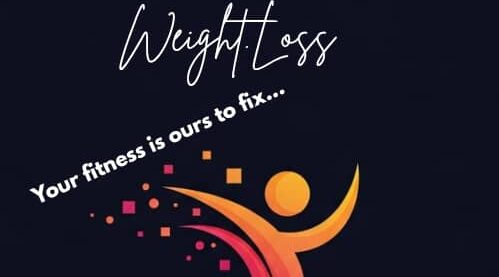The Sundance Film Festival: Everything to Know
Legendary actor and director Robert Redford quietly passed away at his home in Sundance, Utah on Tuesday, September 16.
Over the course of his career, Redford appeared in more than 80 films and directed nine, earning himself an Academy Award, two Golden Globes, and a BAFTA, as well as being honored with the Cecil B. DeMille Award in 1994.
Yet, for all his Hollywood clout, Redford’s greatest influence to the medium of film was through his Sundance Film Festival. Since its inception, Sundance has grown into the largest independent film festival in the United States, with the 2023 festival seeing 423,234 registered attendees between in‑person and online viewership.
Sundance has effectively launched the careers of countless filmmakers and actors, and helped evolve the film industry as we know it. As such, Redford’s impact simply cannot be overstated.
How did the Sundance Film Festival start?
What would eventually become the Sundance Film Festival started as the Utah/US Film Festival, which was founded in Salt Lake City in August 1978 in an effort to bring filmmakers to Utah. It was founded by Sterling Van Wagenen, who was at the time head of Redford’s company Wildwood Enterprises, Inc., John Earle, and Cirina Hampton-Catania of the Utah Film Commission.
Redford, who had purchased land in Sundance in the late 1960s, then founded the nonprofit Sundance Institute in 1981 “to foster independence, risk-taking, and new voices in American film.” The name was a nod to his character in the 1969 film, Butch Cassidy and the Sundance Kid.
In 1984, the Sundance Institute took over management of the festival, which had since been rebranded as the US Film and Video Festival and moved to moved to Park City in January, as opposed to being held the summer.
But it wasn’t until 1991 that the festival was officially renamed the Sundance Film Festival, as we know it today. And it also wasn’t without objection from the institute’s founder.
“I thought it was too self-serving,” Redford told Democracy Now! in 2015. “And so, the group that I was involved with, we were looking for a name for the area. And Sundance came up, and I said, ‘Well, it’s a great name, but I don’t want to use it, because it looks like it’s self-serving, because of the film.’”
“They said, ‘Well, it’s just a great name. It’s just a great name,’ and tried to use all kinds of reasons why it should be used,” he continued. “‘If you get up to the top of the mountain, the sun dances on the snow.’ And I said, ‘Ugh, I don’t think it’s a good idea.’ But I was outvoted.”
The name stuck, and the festival went on to experience monumental growth throughout the ’90s, putting it on the same level as other big name festivals such as Cannes, Venice, Berlin, and the Toronto International Film Festival.
Which celebrities got their big break at Sundance?
Dozens of high-profile independent filmmakers got their start at Sundance, including Quentin Tarantino, Darren Aronofsky, James Wan, Paul Thomas Anderson, Kevin Smith, and Steven Soderbergh, to name a few. But plenty of A-list actors also got their Hollywood breaks after their films premiered at the festival. Below are a baker’s dozen of some of the most notable stars who became household names thanks to the Sundance.
Jennifer Lawrence
Lawrence was virtually unknown when she starred in Debra Granik’s film Winter’s Bone, which premiered at Sundance in 2010.
Ryan Gosling
Three years before establishing himself as an A-list leading man in The Notebook, Gosling’s breakthrough role was as a Jewish neo-Nazi in The Believer, which premiered at Sundance in 2001.
Brie Larson
Larson had been acting over a decade, but it was the indie drama Short Term 12 that put her on the map when it premiered at Sundance in 2013.
Carey Mulligan
Mulligan’s breakthrough role was in the 2009 coming-of-age drama An Education. The role eventually earned her a BAFTA Award for Best Actress and an Academy Award nomination for Best Actress.
Michael B. Jordan
Jordan’s big break came in Ryan Coogler’s feature directorial debut Fruitvale Station, which premiered at Sundance in 2013.
Elizabeth Olsen
Despite her famous siblings, Olsen only came on Hollywood’s radar after her big screen debut in the 2011 Sundance darling Martha Marcy May Marlene, winning director Sean Durkin the Directing Award.
Paul Dano / Abigail Breslin
Though both Dano and Breslin both had a handful of acting credits under their belt, it wasn’t until the young stars appeared in the 2006 comedy drama Little Miss Sunshine that both of their careers really took off.
Amy Adams
Adams had a number of acting credits under her belt before the comedy-drama Junebug premiered at Sundance in 2005, but it was her performance in that film that really put her on the map.
Hugh Grant
Grant had also been acting for over a decade before his breakout in the 1994 British romcom Four Weddings and a Funeral, which cemented his status as a leading man.
Tessa Thompson
While Thompson now commands franchises such as Creed and the MCU, she got her big break in Dear White People, which premiered at the 2014 festival.
Jake Gyllenhaal
One of the most versatile working actors today, Gyllenhaal was a virtual unknown until he made waves in the now cult classic science fiction psychological thriller Donnie Darko, which premiered at Sundance in 2001.
Anya Taylor-Joy
Taylor-Joy’s feature film debut The Witch effectively launched her career when it premiered at Sundance in 2015.

